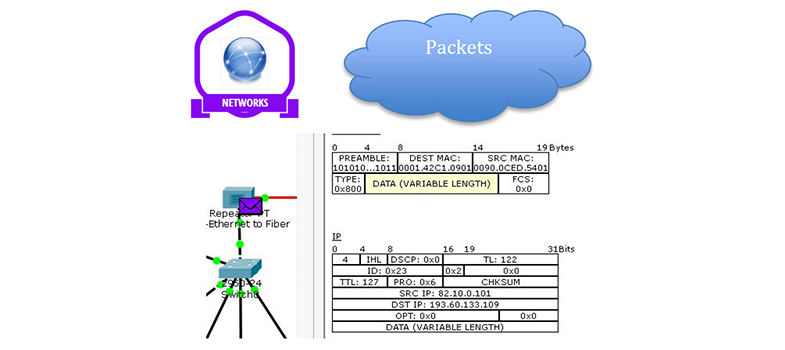Data networks and IP addresses
1 Network communication
- Communication begins with a message, or information, that must be sent from one individual or device to another. People exchange ideas using many different communication methods. All of these methods have three elements in common:
- The first of these elements is the message source, or sender. Message sources are people, or electronic devices, that need to send a message to other individuals or devices.
- The second element is the destination, or receiver, of the message. The destination receives the message and interprets it.
- The third element, called a channel, consists of the transmission media that provides the pathway over which the message travels from source to destination.

Figure 1
- Consider, for example, communicating a message using words, pictures and sounds. These can be sent across a data or information network by first converting them into binary digits, or bits. The bits are then encoded into a signal that can be transmitted over the appropriate medium. In computer networks, the media is usually a type of cable, or a wireless transmission. A transmitter is used by the message source to place data onto a transmission media. A receiver is used by the message destination to recover data from the transmission media.
- The term ‘network’ in this course refers to data or information networks capable of carrying many different types of communications, including traditional computer data, and interactive voice, video and entertainment products.
- Traditionally, the sources and destinations within information networks were computers, but today there are a wide range of devices capable of exchanging data:
- smart phones
- tablet computers
- cars
- domestic appliances.
- The transmission media can be either guided or unguided.
- Examples of guided media include wired technology such as:
- coaxial cable (e.g. cable TV systems)
- unshielded twisted pair (e.g. DSL broadband)
- fibre optic (e.g. high speed cable systems).
- Examples of unguided media include wireless technology such as:
- WiFi (e.g. home network)
- cellular (e.g. 3G, 4G, 5G mobile phones)
- satellite (e.g. television).
- The media chosen will determine the type of transmitter and receiver required.
